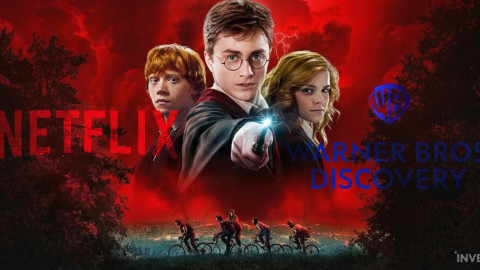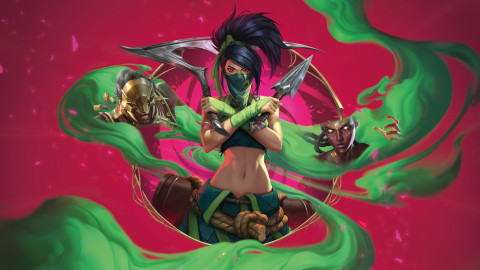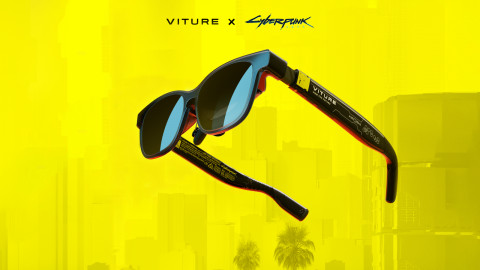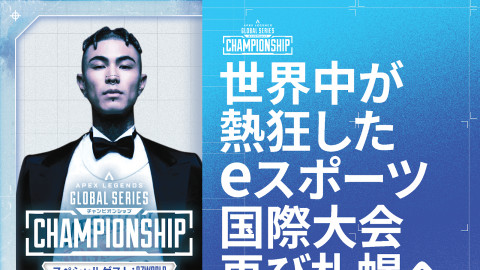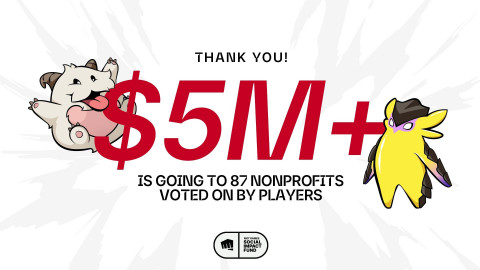
As we watched our dreams of an all EU world finals collapse when G2’s magical worlds run came to an end, we saw, how far Europe advanced as a region this year.
G2 might have been outclassed in the semifinals, but that does not take away the fact of how strong their run was at this year’s world championship. Now we find ourselves being represented by Fnatic in the finals, a team that has been one of the favorites to take the tournament right from the start.
All in all this year's World Championship has been very successful and entertaining for the EU LCS fans. We’ve seen team’s take risks at the beginning of the year and even if we had our doubts, the region would strive and become a strong world’s contender by the summer split as the teams would show their progress in tight fights at the playoffs and gauntlet run.
This year the EU LCS had the most competitive year in a long time. Not only the three worlds representatives proved themselves as some of the strongest teams in the tournament but showed how strong the other teams in the region that barely made it truly are.
Nobody could foresee that Vitality would almost make it out of groups against RNG, Gen.G and Cloud 9, that has played a fantastic tournament. This is their credit, their credit towards their improvement. A glimpse of that improvement was shown during the third-place match in Madrid and fully developed during their preparation for the world championship in their Korean boot camp. Although the western teams that succeed in the world championship didn’t succeed because they adapted or played a certain meta played in the whole world. They played their own style, far different from each other.
However, the important aspect to look at is, where did those teams develop their team identities?
Starting from ground up

2017 was a rough year for Europe. It was a year of reform for many teams. We’ve seen Origen’s fall, we’ve seen Fnatic rebuild their lineup again, we’ve seen Misfits in their best form and EU’s level overall felt lower than previous years. G2 didn’t overcome their struggles on international success at worlds, but there was no team in Europe being able to contest their dominance. Although, they had most likely the hardest group in that year’s world championship. So Europe’s hope ended up being the underdog, Misfits that surprised everyone by getting SKT to a Game 5 in the quarterfinals. Despite all the big results, those improvements were rather a short-term development inside the region.
Then the whole LCS changed due to the introduction of franchising in North America and the discussion about the introduction in Europe itself brought a lot of changes in structure for many teams and their organizations for the whole year of 2018. Forcing a lot of changes for better or worse. For example, G2 rebuilt themselves, Splyce rebuilt their lineup, h2k brought in a whole new lineup and so on. The only team that in the end didn’t change anything in their lineup was Fnatic. Even though they had to use a sub due to SoaZ being forced into a break due to an injury by the end of the spring split.
The region was forced to find themselves again. There was no foundation other than, EU’s talent base and a team to beat. A team that wasn’t even the favorites, but showed to be a promising contender for the 2018 season. Even if there was any solid foundation for teams to improve solely on their development as a team it would be nullified by the crazy meta changes in the summer split this year.
Who needs AD carries anyway?
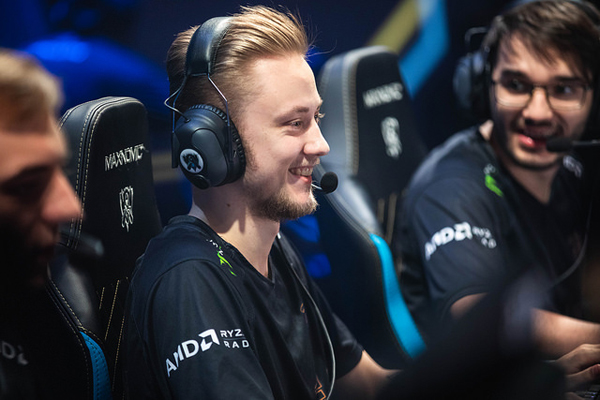
During the most part of the split, AD carries were basically unplayable for the majority of the summer split and teams were either forced to play with their sub mid or top laner’s in the bottom lane or the ad carries to play champions they were not used to play. Fnatic luckily had two top laners and found a quick solution, so Rekkles doesn’t need to adapt.
Some other teams like G2 Esports for an example would capitalize on such a change really quickly, as they would just pick champions that benefit their tempo based gameplay.
While some other’s would struggle for a few weeks until their AD carries were able to adjust their champion pool’s to the meta mechanically. However, as soon as the most AD carries were finally comfortable playing their Ryze’s and Swain’s on the bot lane, Riot changed the game slowly back to an ad carry based bot lane play. Not that the most ad carries didn’t prefer that but it definitely wasn’t optimal to showcase their best performances in the one or two weeks after the changes, despite looking much more comfortable than on ap carries before that. So teams were forced to find some sort of identity to survive this huge meta shifts. Making the bot lane highly prioritized once again. Which makes me wonder how good H2K might have been if there would have been a more “traditional” meta during the summer split.
Additionally, there was another huge meta shift, that some of the teams in Europe benefited off, the removal of the tracker’s knife in patch 8.4. See, the way League of Legends was played in the past couple of year’s was very control based. A meta that was enforced by the Korean teams for the past couple of years. Not that it was impossible to play a different style, in fact, Chinese teams never fully adapted to a control based playstyle and always focused on improving their tempo and aggressive skirmishing style, but the western teams tried their fair share of adaptation. They looked up and learned from the Koreans, then they constantly proved to be playing the superior style if you look at their international results after winning their first world championship in 2013. The Korean style became meta, their slow control and scaling based strategy was the way to play. The team that would do fewer mistakes would win the game. Korean teams were also extremely good at punishing enemies mistakes, one of the reasons this meta was played almost to perfection by Korean teams across the years. This was also heavily influenced by the patches in the game over the years.
Suddenly, it was much harder to control the early game. Wards weren’t that accessible anymore, making the early game much easier to snowball and a lot easier to force mistakes during the earlier stages of the game. In combination with the meta favoring laning priority due to early skirmishes being more frequent and snowballing the early game easier, the teams had to adapt and couldn’t afford to give up the early game in order to scale anymore. Probably one of the aspects that lead to Korea’s downfall at this world championship.
This is a very familiar style to European teams. This style feeds on individual skill and a lot of skirmishes. A style that European teams usually have been famous for, famously this was where Fnatic’s most famous lineups would excel at. Which in fact is the case today.
Fnatic prioritizes the most out of the three European teams at worlds the early game in the draft, has most likely the best jungle and mid duo in this tournament and an overall good read of the opponents early game plans. While G2 found their niche on how to enhance tempo and snowball out of that, they fell short against Invictus gaming in the semi-final by trying to scale it out and got outclassed by IG’s individual talents in lane. On the other hand, Vitality managed to almost carry themselves on their individual talent alone and if it wasn’t for the team’s overall lack of experience, they actually might have been able to make any team make a run for their money in a best of series. Leading all the way to the final, where Fnatic played the most dominant and constant performance throughout the whole summer split will face off the team with the best individual players at this world championship.
So due to the constant meta changes and the big meta shift to AD Carry focused play teams were forced to adapt drastically and with the short amount of time left to prepare for playoffs, teams needed to adapt extremely quickly. Leading for the teams to resort to what they were already used to play, their own individual styles due to the lack of time. One of the main reasons Fnatic excelled in the later runs of the tournament, they just kept doing what they were already doing, while the other teams lost themselves in the transition or in the cases of Schalke 04 or Vitality manage to find their niche right in time.
One last step.
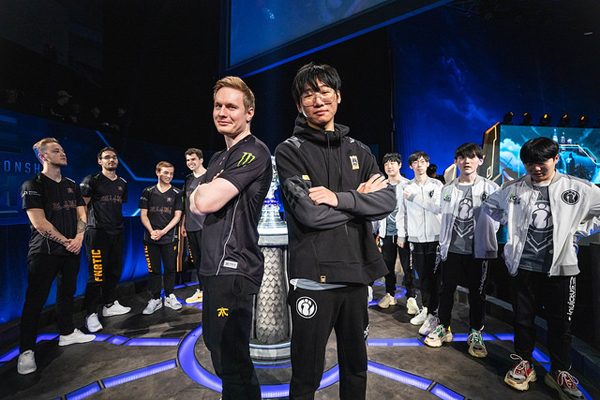
Invictus Gaming and Fnatic have already faced each other and without a doubt in two relatively close games, Fnatic was able to stand strong against Invictus Gaming in their strongest aspects and being able to overcome them twice in the mid to late game aspect.
Fnatic fits the Chinese meta, they draft around the early game, prioritize lanes, focus on winning bot lane matchups and having mid jungle priority. Those are the aspects most often present in a Fnatic draft. Having the flexibility of a more aggressive and a more experienced top laner gives them a share of options to adapt depending on how aggressive IG will start the series. It will depend on how Fnatic is able to maintain bot lane advantage while not giving away too much to TheShy and Rookie to play with. Fnatic will have to either shut down Jackeylove in the draft to keep the bot lane priority in the draft so Broxah can invest more time on the top side of the map as they did in their series against Cloud 9. The problem is it won’t be easy against IG to play that way as both teams could aim to prioritize the same. Will Fnatic even contest the Lucian Braum bot lane at all? Will they take away Kai’Sa? Those picks will play a huge aspect of how Broxah and Ning will have to play and prioritize during the early game. Leading to either a fed Rekkles or Caps or an unstoppable TheShy or Rookie.
If the west has one shot to win a World Championship, it is now.
This Fnatic lineup has proven to be one of the most decisive and strongest teams we’ve had in the west’s history. Starting with their attitude prior, during and after the games to their confident gameplay and wise preparation. Since the addition of Joey “YoungBuck” Steltenpool, the talented team managed to develop their strengths and make their weaknesses be their identities. Not only has Fnatic evolved into the powerhouse that will be contesting the summoner’s cup on November 3rd, but the whole region proved once again that there is plenty of EU talent active, it was just a matter of time and guidance that the region needed to shine.
So, Good Luck Fnatic.

(Photos credit by LoLesports Flikr)
Sort by:
Comments :0


